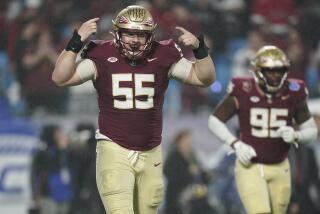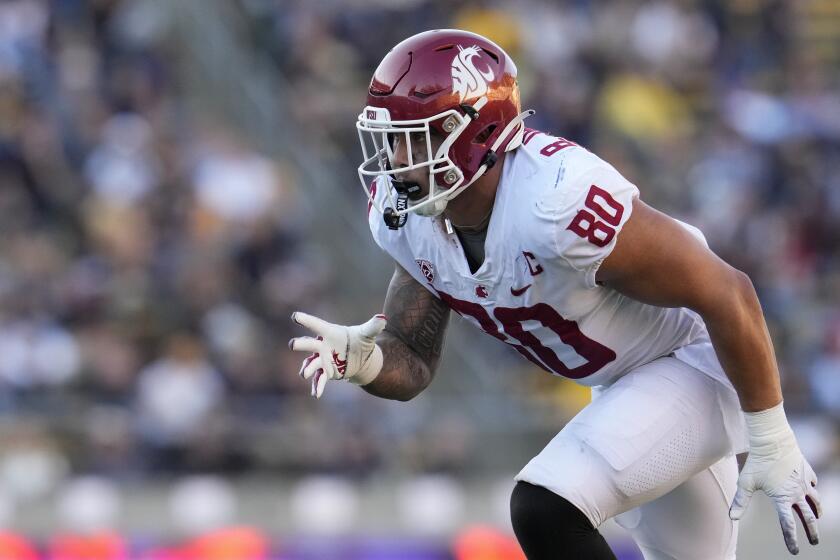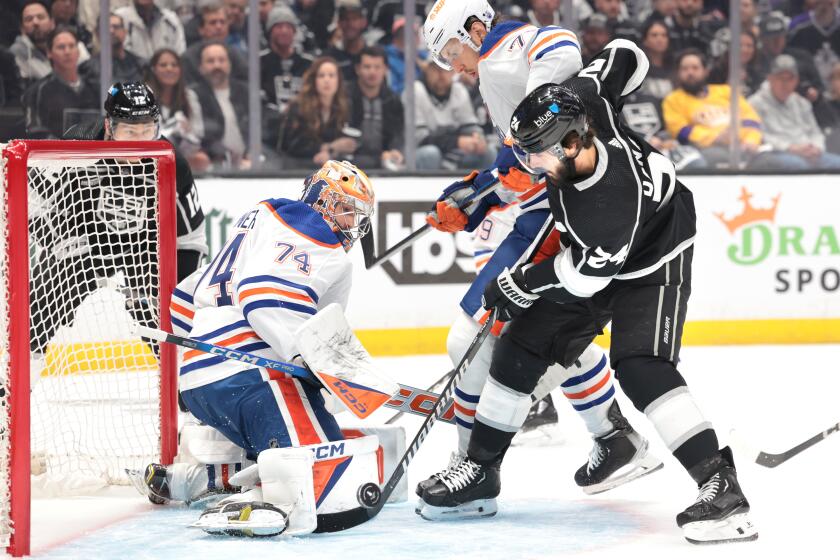For L.A., a football fix?
Los Angeles is considering a downtown stadium with the aim of attracting a National Football League franchise. Other cities have been building downtown sports facilities since the 1960s as an urban revitalization strategy. Those seemed like a good idea at the time. But would we, or should we, build such mega-structures downtown today? With rare exceptions, we think that although basketball and hockey arenas can make sense and baseball parks have merit, football stadiums can be a bad choice for downtowns.
Consider how stadium location decision-making has evolved. Most pre- World War II stadiums were in city neighborhoods: Fenway Park in Boston, Wrigley Field in Chicago, Lambeau Field in Green Bay and Forbes Field in Pittsburgh. The postwar trend was to suburban stadiums and arenas accessible only by car — Detroit’s Pontiac Silverdome, the Palace of Auburn Hills in Michigan and the Meadowlands in New Jersey — then back to downtowns and downtown-adjacent locations, beginning with Camden Yards in Baltimore and Coors Field in Denver. Baltimore, Philadelphia, Pittsburgh and Detroit have all built downtown football stadiums in recent years.
When Camden Yards and Coors Field were built, the future of downtowns was still very much in question. City officials were searching for that “silver bullet” to spark significant spinoff development. When Jacobs Field and Gund Arena in Cleveland were built on adjacent sites, Thomas Chema, then executive director of Cleveland’s Gateway Economic Development Corp., asserted that more than 20 restaurants opened within a few blocks. We very much doubt if a football stadium, with fewer than a dozen games a year, would have generated much spinoff.
Naturally, dozens of other cities, seeing the success of the Baltimore, Cleveland and Denver baseball parks, moved to finance stadiums and arenas, hoping for similar success. Professional team owners picked up the rhythm, and pitched battles were waged to land or retain franchises based on the availability of state-of-the-art stadiums, usually financed with massive public subsidies. Community fears about losing the home team often played a significant role in upping the ante. Public funding was justified on the basis of job creation, spinoff investments, downtown revitalization and increased property values.
Team owners found themselves in the enviable position of entertaining competing bids from cities wanting to play the major league game.
At the same time, many long-standing franchises remained in place despite having older, less-efficient facilities, opting for modernization, largely publicly financed. Owners demanded either new facilities or remodeled facilities incorporating more luxury boxes and more sponsorship opportunities, like naming rights. These deals kept many teams from thinking about leaving for greener pastures, including the Green Bay Packers, Boston Red Sox, Los Angeles Dodgers and Chicago Cubs, all teams deeply ingrained in the identity of their host communities.
Cities almost always help finance new stadium and arena construction, sometimes with additional funds from county and state government. Some cities own them or create a quasi-public entity to own and operate them. Often, the sports team has a “sweetheart” lease based on the notion that the very presence of the team in downtown will create so much other taxable activity — and jobs — that it is in the city’s interest to charge little or no rent. Cities have also been willing to negotiate additional subsidies as leases expire.
Over the years, owners frequently showed operating losses, but the real money is to be made when the franchise is sold, so an owner can “lose” money for several years, then sell the team and recoup all operating losses and much more.
Most cities with major league teams have experienced significant downtown reinvestment over the last two decades. Downtown revitalization is much more advanced and refined than it was 20 years ago. Virtually every large or medium-sized city has downtown management organizations or business improvement districts. Downtown residential development has become a new anchor and tax revenue generator. Professional sports teams by and large are profitable enterprises, and are seen as complementary partners in this mix. Though professional sports teams are frequently seen as amenities that attract additional commercial and residential development, teams today profit more from television revenue than actual gate income.
Against that backdrop, cities and states across the nation are grappling with the effects of an economic downturn about to enter its fourth year. All levels of government are increasingly pressured to modify even basic service delivery while holding the line on taxes. Yet additional pressure persists for cities with aging sports complexes or with teams not among the elite in their leagues to rebuild or lose out, even when evidence is slim that public spending will generate an equivalent public return.
From a public policy point of view, elected and appointed officials, business leaders and local residents first need to ask these questions:
•Are downtown sports facilities still a good idea? If so, why?
•Downtown sports facilities take up large amounts of scarce land, sometimes as much as 100 acres in the case of football stadiums and associated parking. Aren’t there better uses?
•Football stadiums host a very limited number of games, and in cold-weather cities are useless for a third of the year unless domed. Why should they be downtown?
•With cities increasingly strapped for funds, should public money subsidize downtown sports facilities?
•How effective an economic development strategy is a downtown sports facility?
•Will the public continue to support public financing — direct or indirect — for these facilities?
•Is there sufficient evidence that the purported economic benefits (jobs, tax revenues, spinoff effects) will materialize?
In analyzing proposed major sports facilities, a key variable is exceptionally hard to quantify: whether a major sports franchise is integral to the sense of identity and community pride that residents and elected officials feel about their city and region. The answer will differ from community to community. If downtowns are the community’s “living room,” building a football stadium is a bit like buying a jumbo flat-screen TV. We may want one for entertaining family and friends, but is it worth the price when the roof is leaking?
These are the questions Los Angeles and its citizens must answer as they consider a new football stadium and whether it should be built downtown.
David Feehan, a former president and chief executive of the International Downtown Assn., headed downtown organizations in Detroit, Des Moines and Kalamazoo, Mich., and currently consults with governments and business associations around the world. Don Shea is executive director of the Jacksonville (Fla.) Civic Council and has led downtown organizations in New Orleans; St. Petersburg, Fla.; Shreveport, La.; and Jackson, Miss.
More to Read
Get our high school sports newsletter
Prep Rally is devoted to the SoCal high school sports experience, bringing you scores, stories and a behind-the-scenes look at what makes prep sports so popular.
You may occasionally receive promotional content from the Los Angeles Times.






